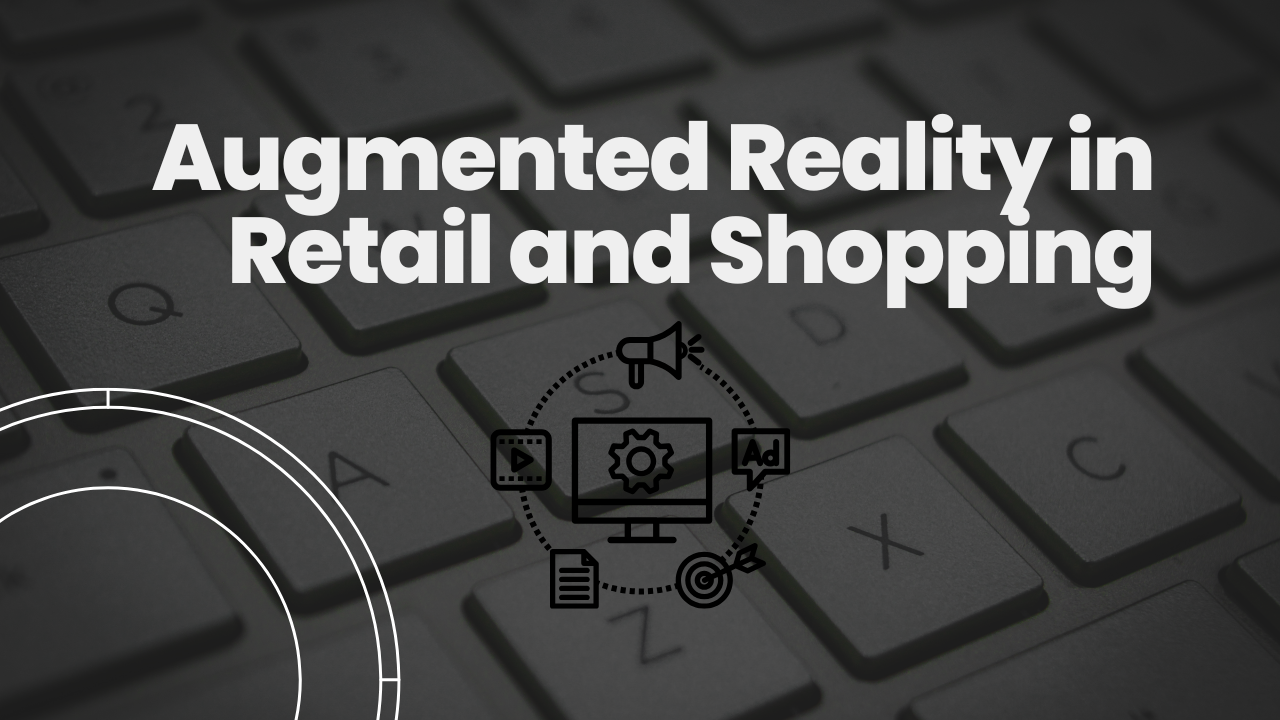In a time when digital technology is changing whole industries, augmented reality (AR) is becoming a game-changer in the retail sector. AR is no longer only for games and fun; it’s now helping stores improve the shopping experience, get people more involved, and make more purchases. AR is changing the way people shop, both online and in person, by combining digital and real-world features.
This isn’t simply a fad; it’s a change that will change the way business is done in the future.
What is augmented reality in stores?
When digital images, visuals, or data are added to an actual events setting, this is called augmented reality.
People usually see these overlays through smartphones, tablets, or AR glasses. Augmented reality (AR) lets shoppers interact with things online before they buy them, which makes the shopping experience more like shopping in person.
Virtual Try-Ons to Improve the In-Store Experience
Virtual try-on is one of the most popular AR apps for stores. With AR, individuals can view just how clothes, shoes, glasses, or makeup appear on them despite having to try them.
For instance, Sephora and L’Oréal use AR mirrors and smartphone apps to let customers virtually put on makeup, which helps them see how different colours and styles look right away.
Product Information That You Can Use
AR may make regular shelves in actual businesses into interactive displays. Customers can see product details, usage videos, reviews, or even personalised recommendations by scanning an item with their smartphone.
For instance, furniture retailers like IKEA employ AR apps to let people scan furniture tags and see how things would look in their homes at full size, which makes them feel more sure about their purchase.
Changing the Way You Shop Online
1. “Try Before You Buy” at Home The dilemma of not knowing if it will fit, match, or be fun—has long been a problem for online buying. AR deals with this directly.
For example, home improvement stores like Home Depot and Wayfair have AR capabilities in their applications that let users use their phones’ cameras to see how furniture, appliances, or decorations will look in their homes. This lowers the number of returns and makes people happier.
Virtual fitting rooms and 3D viewers
For online clothing stores, AR-powered fitting rooms let customers view how clothes look on avatars that are based on their own body dimensions. 3D viewers also help people make better choices by giving them a full perspective of things.
For example, fashion companies like Zara and Nike have used AR to make virtual fashion presentations, model products in 3D, and make purchasing more fun.
Increasing Sales and Customer Engagement
1. AR ads and immersive campaigns
With AR, marketers can make ads that people can interact with, which is much more effective than standard ads. Customers may do more than just look at a product; they can change its colours, watch it in action, or put it in their own space. Pepsi’s renowned AR bus shelter ad in London employed AR to make aliens, tigers, and spaceships appear on the street. It was an amazing, viral experience that got people talking about the brand.
2.Loyalty and Gamification
Retailers are using AR in games to reward customers for going to stores, scanning products, or completing AR-based challenges. This makes people feel good and makes them more loyal to your brand.
For example, Pokémon GO made a lot of stores use AR games and special events that combine shopping and fun to get more people to come into their stores.
Advantages for Stores
AR has a lot of benefits for businesses:
More engagement:
Interactive content keeps people on websites and in stores longer.
Shopping that fits your wants:
AR tools can change to fit your needs and tastes. Brand differentiation: In competitive markets, brands stand out by offering cutting-edge experiences.
Things to think about and problems
Even though AR has a lot of potential in retail, it still has some problems to deal with:
It costs a lot to build and keep up AR apps. Older devices or browsers may not be able to access all of the features. Some shoppers may not know how to utilise AR tools correctly, thus they need to be taught. People are worried about their privacy, especially when AR collects personal data to make things more personal. These problems are slowly being solved as technology gets better and easier to use.
What AR Will Look Like in the Future
AR in selling growing very fast these days. Specialists in the field predict that AR in selling will be valuable twelve billion dollars by 2027. This is because 5G, AI, and wearable technology will all get better. As people want more personalised, immersive, and easy-to-use experiences, AR will go from being a novelty to a must-have in stores, both online and in person.
In conclusion
Augmented reality is more than just a buzzword in retail; it’s a strategic tool that improves the consumer experience, generates trust, and increases sales. AR is changing the way people interact with businesses and products, from trying them on in a virtual store to talking to them in person. As more stores start using AR, those who come up with new ideas first will have an advantage in providing shopping experiences that are memorable, interesting, and easy to navigate. The future of retail is not simply digital in nature, but also enhanced.

